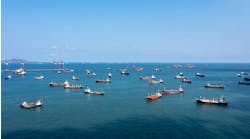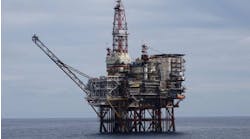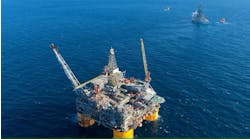HOUSTON, Oct. 10 -- Oil companies will make capital expenditures of $7.3 billion on projects in the "second tier" of West African countries before 2005, said UK energy analyst Douglas-Westwood Ltd.
Majors and independents alike are attracted to these prospects, they said.
Dominic Harbinson of Douglas-Westwood said, "West Africa is presently the world's most exciting offshore region, with field developments off Angola and Nigeria acting as a 'capex magnet' attracting 76% of the region's oil company dollars over the next 5 years."
Harbison spoke in London at an IBC Global Conferences Ltd. event.
The analysts called attention to what they called "the other West Africa," consisting of nine nations: Ivory Coast, Ghana, Benin, Cameroon, Equatorial Guinea, Gabon, Congo (Brazzaville), Congo (former Zaire), and Sao Tome and Principe.
"Broadly speaking, the pattern in these 'second tier' countries seems to be one of rationalization and/or diversification on the part of the majors, and a growth in corporate diversity," Harbinson said. He noted independent companies are acquiring marginal prospects on the shelf and in deep water and that a number of 'minnows' are taking speculative positions in deepwater frontier areas.
The analysts said that Equatorial Guinea will likely "head the parade," with 24% of expected investment in these countries through 2005. "This small island nation boasts the region's first deepwater production with ExxonMobil Corp.'s Topacio field and Triton Energy Ltd.'s Ceiba field and has six fields identified for development through 2005." Douglas-Westwood said Okume field on Block G is likely to be the most significant future Equatorial Guinea development, as it is a candidate for a floating production ship.
The report said the waters off Congo (Brazzaville) hold the largest reserve base targeted for development over the period. It will account for 22% of the investment pie.
Gabon has 21 offshore fields identified for development over the period, targeting reserves of 296 MMboe. Pioneer Natural Resouces Co. expects production of 50,000 b/d from Bigorneau South-Olowi Marin prospect, said Douglas-Westwood. The country will account for 20% of capex spending.
Cameroon's 18 established fields hold 433 MMboe, 80% of which is gas. It can expect 13% of the $7.3 billion figure.
Ivory Coast (10%), Ghana (9%), Benin (1%), and Congo (former Zaire) (1%) account for smaller, but not inconsiderable, investment predictions, said the analysts.
Sao Tome and Principe has its first licensing round scheduled for March 2002.
Douglas-Westwood said that of the $7.3 billion in investment, $2.9 billion would be spent on floating platforms, $1.5 billion on subsea wells and hardware, $1.3 billion on fixed platforms, $0.9 billion on pipelines, and $0.7 billion on surface wells and trees.
Harbinson warned, however, "Oil prices are buoyant, but the economic situation in many of these countries is precarious and much of their extensive deepwater acreage is virgin territory. These factors generate a heady mixture of high hopes and hype, laced with some bitter disappointments. In this environment, a critical issue for both operators and host nations will be how the risks and the rewards of future offshore E&P activity will be distributed."


